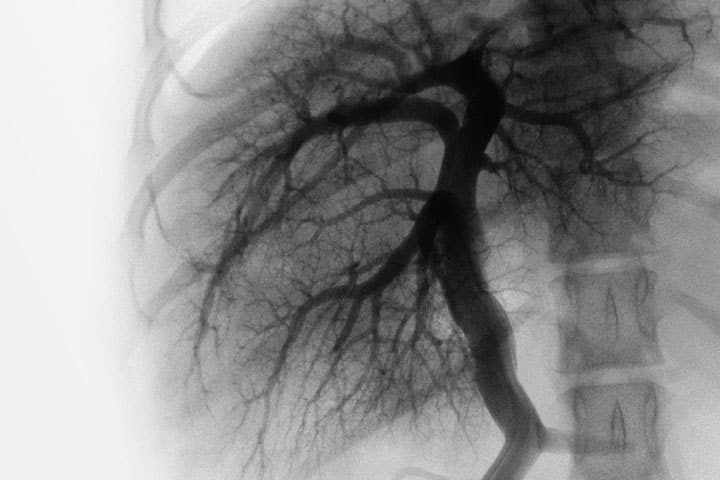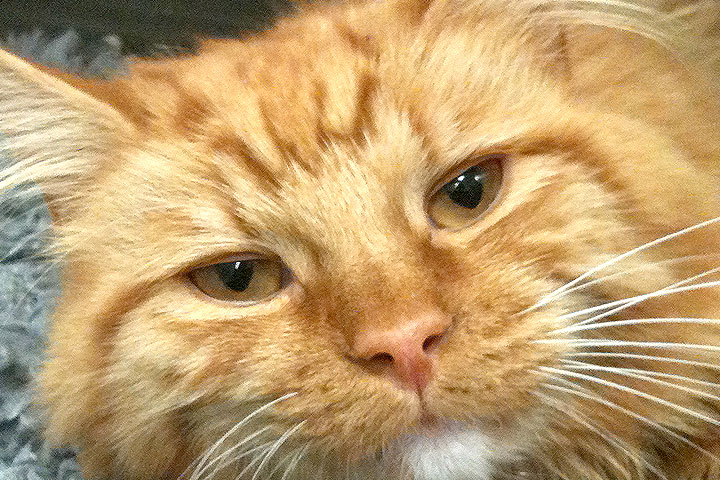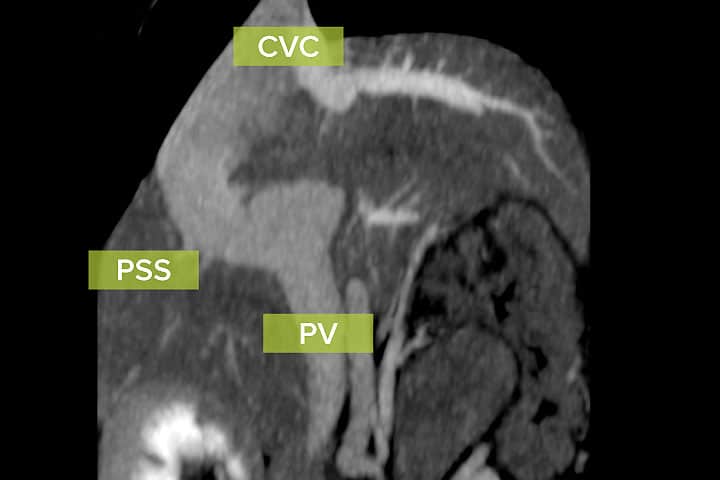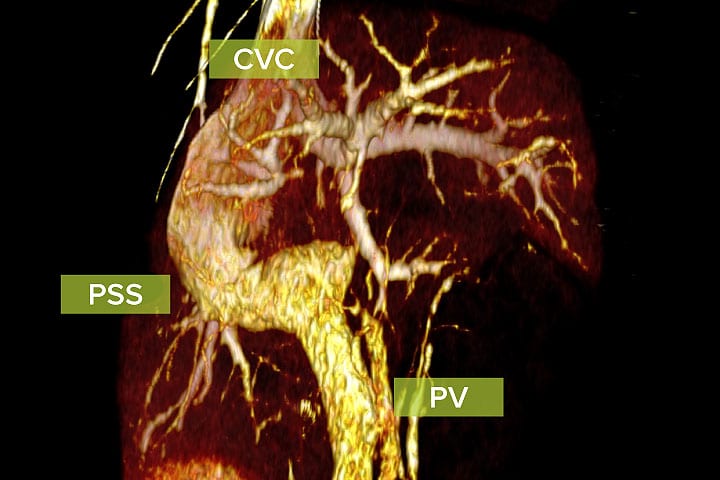
Hepatic vascular abnormalities can be divided into congenital and acquired portosystemic shunts (PSS), hepatic arteriovenous malformations (AVM) and microscopic hypoplasia of the portal system (portal vein hypoplasia; previously called microvascular dysplasia).
Single congenital portosystemic shunts are the most common of these anomalies and generally consist of a single extra or intrahepatic vessel that communicates between the portal vein and systemic veins (vena cava or azygous).
History/Clinical Signs
- Age at presentation is most commonly young (1 month-2 years) although some are much older, even over 10 years
- Hepatic encephalopathy (HE) is one of the main causes of signs in PSS patients and is due to the lack of filtration of neuro-toxic compounds such as ammonia or aromatic amino-acids. HE signs include seizures, aggression, hyperexcitability, head pressing, vacant staring, blindness and random barking. Signs may be exacerbated by eating, NSAIDs and administration of sedatives/anaesthetics
- Polyuria/polydipsia
- Small stature/failure to thrive
- Abdominal effusion
- Intermittent gastrointestinal signs
- Lower urinary tract signs secondary to ammonium urate stones and secondary urinary tract infections. Some dogs with small shunts or shunts that pass through the diaphragm may present at an older age with recurrent episodes of urethral obstruction. In any dog with a diagnosis of ammonium urate stones, consider a PSS
- Copper coloured irises inappropriate for the breed can be seen in cats
- Some patients may be asymptomatic, especially for shunts that cross the diaphragm.

6 month old kitten with copper coloured irises related to a single congenital extra hepatic portosystemic shunt
Diagnostic Tests
- Haematology: iron deficient anaemia (normochromic, microcytic), leucocytosis
- Biochemistry:
- Dogs: hypoalbuminaemia, reduced urea, hypocholesterolaemia, hypoglycaemia
- Cats: low urea and creatinine, mild elevations in liver enzymes
NB: haematology and biochemistry may be normal in some cases
- Urinalysis: decreased USG and ammonium biurate crystaluria, proteinuria
- Liver function tests:
- Bile acid stimulation test (BAST) reveals markedly elevated levels of bile acids
- Ammonia may be elevated although this test is less sensitive than a BAST
- Coagulation tests: occasionally there may be elevations in PT and aPTT although spontaneous bleeding is rare in these cases
- Abdominal ultrasound is a useful diagnostic modality although is operator dependent with a sensitivity of 74-95% in the hands of an experienced operator
- Computed Tomography Angiography (CTA) is considered the gold standard for the diagnosis of portosystemic shunts. It allows 3D visualisation of the portal and systemic vasculature and allows the identification of the shunting vessel. It is extremely helpful in surgical planning as it offers visualisation of the junction between the shunt and the systemic circulation (vena cava/ phrenic vein/azygous vein) which is the location of where we aim to ligate the shunt.


Computed Tomography Angiography 3D visualisation of the portal and systemic vasculature identifying the shunting vessel
Case Advice or Arranging a Referral
If you are a veterinary professional and would like to discuss a case with one of our team, or require pre-referral advice about a patient, please call 01883 741449. Alternatively, to refer a case, please use the online referral form
About The Discipline
Soft Tissue Surgery

Need case advice or have any questions?
If you have any questions or would like advice on a case please call our dedicated vet line on 01883 741449 and ask to speak to one of our Soft Tissue Surgery team.
Advice is freely available, even if the case cannot be referred.
Soft Tissue Surgery Team
Our Soft Tissue Surgery Team offer a caring, multi-disciplinary approach to all medical and surgical conditions.